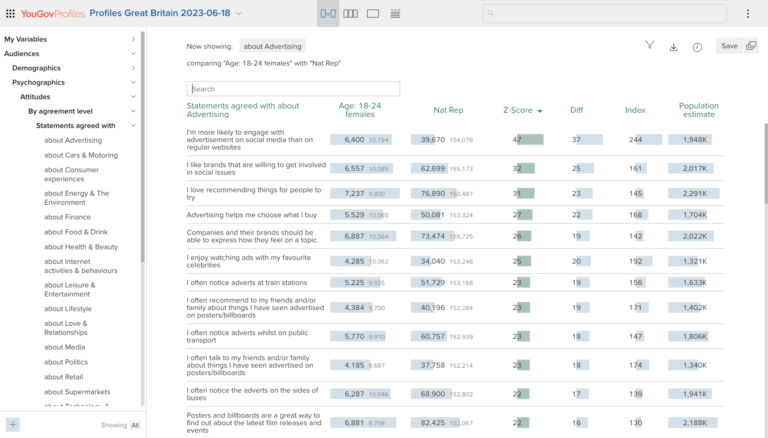
The Art and Science of Good Ad Copy
Over the past few years, the variety and volume of creative assets in an ad account has increased considerably. Each format has a key role to play in the ad account structure. However there is one constant across each format – ad copy. Across every social media platform, and every ad format, ad copy is always a requirement. With this in mind, rather than being an afterthought during the setup, ad copy must be drafted in good time using a combination of art and science.
What is ad copy and why does it matter?
Ad copy is the written content which accompanies a static image, carousel, or video ad. The purpose is to drive an action or elicit an emotional response. Typically, these go hand in hand.
Ad copy matters because it’s still one of the first things that people see when scrolling through social media. We know that most social video ads are only watched for 3 seconds, but in that 3 seconds a person’s eyes will also scan over the ad copy. If the ad copy speaks to their desires more quickly than the video does, then the viewer will be encouraged to keep watching, or take an action.
What is the process for creating good ad copy?
Step 1: Identify your audience
Identifying your audience is the first step when it comes to creating good ad copy. Without a clear idea of your target audience it will be impossible to create ad copy which will stand out enough to resonate with the core customer. As the old saying goes, when you speak to everyone you speak to noone. There are various ways to identify your audience. At Propellernet we use YouGov Profiles which provides us with over 1 million audience data points for granular insights. However, it’s also possible to use customer surveys, customer data, focus groups, third party data, and reports from reputable sources. Piecing together all of this information will help you build a solid audience demographic.
Step 2: Understand their needs, desires, and fears
Once you understand your audience demographic, the next step is to understand their needs, desires and fears in relation to your product or service. In other words:
- Why should they choose your brand?
- What do they want to gain by choosing your brand?
- What would put them off your brand?
This information can be gained using social listening tools to understand the conversations that are being had about your brand, reviewing customer feedback, and having honest conversations internally about what your brand does better than anybody else.
On a deeper level, at Propellernet we also do psychographic analysis. Psychographic analysis is a means of studying behaviour based on psychological characteristics. Whereas demographic data tends to be quantitative, psychographics are qualitative and based on statements. Combining the two means that you can understand who your audience is, and what makes them unique. The only way to build a complete customer persona profile is to combine demographic and psychographic statements. This means that you will be able to understand who your customer is, and why they are the way they are.

Step 3: Create a content matrix
Once you understand who your audience is, and what makes them tick, the next step is to create a content matrix. This is used to map your assets, ad copy and ad variations across the campaigns in your ad account. With a well structured ad account you can speak to multiple audiences, and address the needs, desires and fears at each stage. Typically prospecting campaigns are used to speak to consumers needs and desires, whilst retargeting campaigns can be used to address fears by adding social proof, credibility, or taking advantage of cognitive bias.
What is the most important part of ad copy?
The most important part of ad copy is the first line. It is important to make the benefit as clear as possible in a matter of seconds.
What are the key metrics to look into to determine ad copy performance?
There are four key metrics to look at when it comes to ad copy performance:
- Clicks
- CTR
- Conversions
- CPA
How can you measure the performance of ad copy?
The most effective way to measure the performance of ad copy is through A/B testing. A/B testing lets you compare two versions of an ad by changing one variable at a time. In this instance, the variable would be ad copy. We recently conducted an A/B test for one of our clients as they launched a new campaign aimed at families.
- We utilised customer data to understand the demographics of the target audience
- We explored YouGov for psychographic analysis
- We created a content matrix
The key insight was that when it comes to family holidays, the most important thing to the key decision maker is the chance to make new memories in a relaxing environment. The decision maker typically finds a luxury resort far more appealing than a busy city break, or island-hopping holiday which is understandable considering the fact that many lead busy lifestyles in their daily life. We used this insight to create multiple ad copy variations around the theme of making memories. The ad copy was then added to the ad account and A/B tests were set up. The results were very clear. Here’s a snapshot from one test:
Variation 1: Lowest CPA

Variation 4: Highest CPA

In each A/B test, the ad copy that was more tailored towards making memories, outperformed the more generic ad copy which promoted the brands general USPs. Therefore, not only does ad copy help improve CTR and clicks, it also has a strong impact at the bottom of the funnel on conversions too.
Summary
Creating good ad copy is a combination of art and science. The word selection is important, but so too is the meaning behind them. The closer the copy can match the needs, desires, and fears of the target audience, the better your results will be – providing the creative assets are strong enough! So rather than seeing ad copy as an afterthought, let’s start viewing it as a key part of the setup.



